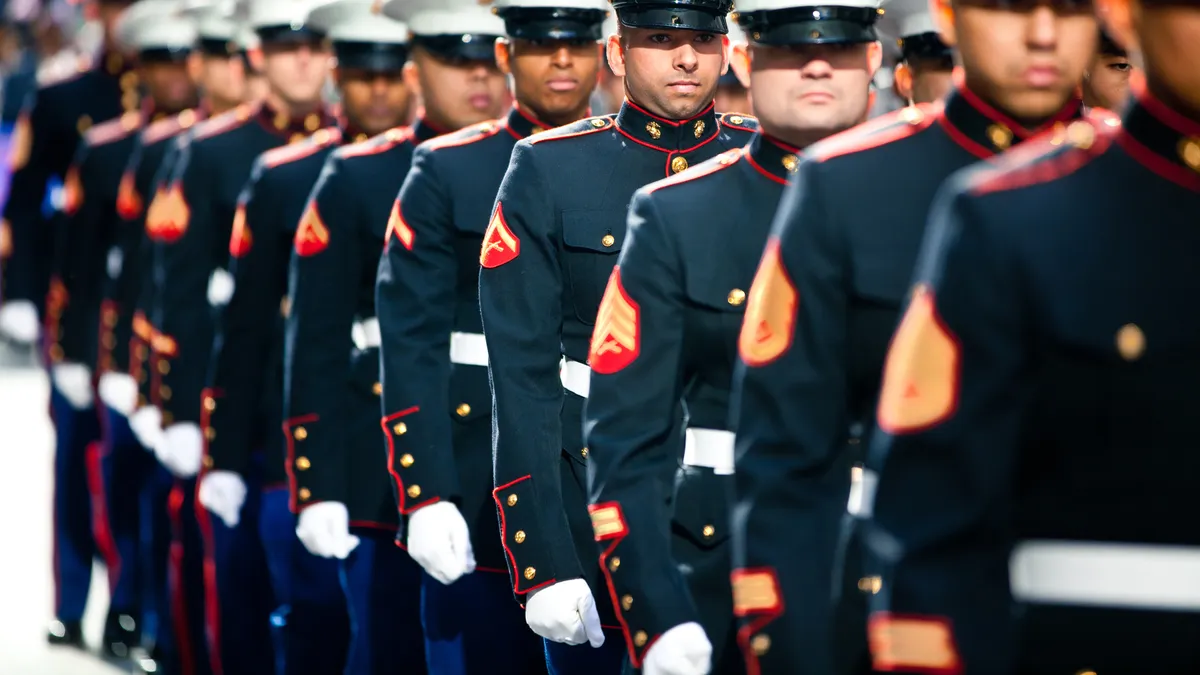Dive Brief:
- Veteran unemployment rates are down but veterans are still 34% more likely to be underemployed compared to their nonveteran counterparts, according to a LinkedIn report.
- While more than half of veterans said they want to pursue a career that differs from the one they held in the military, employer programs and civilian recruiter perceptions often "unintentionally funnel" veterans into specific industries and jobs, Sarah Roberts, head of military and veteran programs at LinkedIn, told HR Dive in an interview. Employers are reaching out to veterans and inviting them to apply, but in many industries, they aren't ultimately hired.
- A disconnect between veterans' skills and how they are perceived in the civilian job market leads to such applicants landing jobs below their education and skills level. Generally, veterans are more likely to receive jobs in aviation, defense, government, and the supply chain but are much less likely to be recruited or hired in the health and wellness, law and marketing industries, among others.
Dive Insight:
Veterans are by now a well-known pool of potential talent, but some recruiters may not understand how to successfully engage this group. Nonveteran recruiters, especially, may not know how to match a veteran's past experience to job openings.
"We think one of the main drivers is this misperception that military experience is less relevant in corporate environments," Roberts said. This disconnect can inadvertently slot vets who have experience leading hundreds of people into entry-level positions, the report noted as an example.
Additionally, veterans tend to have more veterans in their networks, while nonveteran applicants might have far fewer. And because a vast majority of people land their first position through a referral, that disparity can make it even more difficult for veterans to communicate their successes to civilian managers, Roberts said.
Employers that want to improve their processes for hiring veterans can conduct an internal audit — if they have a program in the first place, Roberts suggested. "Look beyond percentages," she said. Does the recruiting program give veterans opportunities beyond two or three basic functions? "Veterans can do more than the one job companies may be unintentionally pipelining them into," Roberts said.














